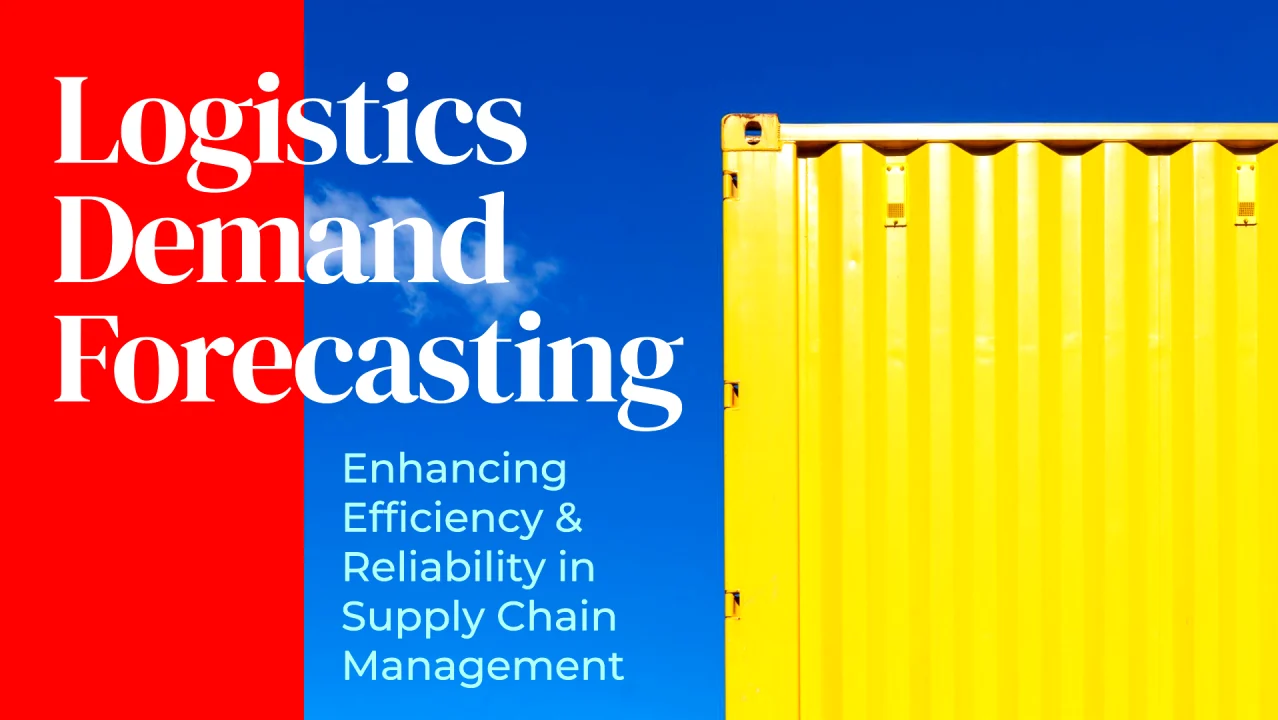Latest Posts
September 11, 2025 Continuing Education in Global Logistics: A Powerful Catalyst for Career Growth
June 30, 2025
Continuing Education in Global Logistics: A Powerful Catalyst for Career Growth
June 30, 2025
 Tariffs: The Upside
June 30, 2025
Tariffs: The Upside
June 30, 2025
 Exploring the Role of Intrapreneurs: Innovation Drivers Within Organizations
Exploring the Role of Intrapreneurs: Innovation Drivers Within Organizations
Newsletter
Sign up to receive email updates from the Freightpath.
"*" indicates required fields
Logistics Demand Forecasting: Enhancing Efficiency and Reliability in Supply Chain Management
June 30, 2025
In today’s globalized economy, logistics demand forecasting plays a crucial role in ensuring the efficient movement of goods and materials across supply chains. It involves predicting future demand for products and services to optimize inventory management, transportation logistics, and overall operational efficiency. This article explores the fundamentals, methodologies, challenges, and best practices of logistics demand forecasting, highlighting its significance in modern supply chain management.
Introduction to Logistics Demand Forecasting
Logistics demand forecasting is a strategic process that enables businesses to anticipate customer demand accurately and plan their supply chain operations accordingly. By leveraging historical data, market trends, and predictive analytics, organizations can make informed decisions to meet consumer demand while minimizing costs and maximizing efficiency.
Importance of Logistics Demand Forecasting
1. Optimizing Inventory Management
Accurate demand forecasting helps organizations optimize inventory levels by ensuring that sufficient stock is available to meet customer orders without overstocking. This reduces carrying costs and minimizes the risk of stockouts, thereby improving overall inventory management efficiency.
2. Enhancing Resource Allocation
Forecasting demand enables efficient allocation of resources, such as transportation assets, warehouse space, and labor. By aligning operational resources with anticipated demand fluctuations, organizations can reduce idle capacity and optimize resource utilization.
3. Improving Customer Service
Meeting customer demand promptly and reliably enhances customer satisfaction and loyalty. Effective demand forecasting ensures that products are available when customers need them, fostering positive customer experiences and maintaining competitive advantage.
4. Cost Reduction
Accurate demand forecasting helps minimize costs associated with inventory holding, transportation, and storage. By avoiding excess inventory and unnecessary transportation, organizations can reduce operational expenses and improve profitability.
Fundamentals of Logistics Demand Forecasting
1. Data Collection and Analysis
Effective demand forecasting begins with the collection and analysis of relevant data sources, including historical sales data, market trends, customer behavior patterns, and external factors (e.g., economic indicators, seasonality).
2. Forecasting Methods and Models
Various quantitative and qualitative forecasting methods and models are used to predict demand:
- Time Series Analysis: Analyzes historical data to identify patterns, trends, and seasonality.
- Regression Analysis: Examines relationships between variables (e.g., sales and marketing activities) to forecast future demand.
- Machine Learning Algorithms: Utilizes algorithms such as neural networks, random forests, and support vector machines to analyze complex data patterns and make predictions.
3. Collaborative Forecasting
Collaborative forecasting involves sharing demand forecasts and information among supply chain partners, including suppliers, distributors, and retailers. This collaborative approach enhances supply chain visibility, coordination, and responsiveness to changes in demand signals.
Methodologies and Approaches to Logistics Demand Forecasting
1. Qualitative Methods
Qualitative forecasting methods rely on expert judgment, market surveys, and consumer feedback to predict demand:
- Market Research: Conducting surveys, focus groups, and interviews to gather insights into customer preferences, purchasing behavior, and market trends.
- Delphi Method: Iterative process involving a panel of experts to achieve consensus on future demand scenarios.
2. Quantitative Methods
Quantitative forecasting methods use statistical techniques and mathematical models to analyze historical data and predict future demand:
- Moving Averages: Calculates averages of past observations to forecast future demand.
- Exponential Smoothing: Assigns exponentially decreasing weights to past observations based on their recency.
- Forecast Error Measurement: Evaluates forecast accuracy using metrics such as mean absolute percentage error (MAPE) and mean squared error (MSE).
3. Hybrid Methods
Hybrid forecasting methods combine qualitative and quantitative approaches to leverage the strengths of both:
- Statistical Forecasting with Expert Adjustment: Integrates statistical models with expert judgment to refine forecasts based on contextual knowledge and market insights.
- Machine Learning Forecasting: Applies advanced machine learning algorithms to analyze large datasets and identify complex patterns for more accurate predictions.
Challenges and Limitations of Logistics Demand Forecasting
1. Data Quality and Availability
Inaccurate or incomplete data can undermine the reliability of demand forecasts, leading to suboptimal inventory management and resource allocation decisions.
2. Demand Volatility and Uncertainty
Fluctuations in consumer demand, market dynamics, and external factors (e.g., economic downturns, geopolitical events) pose challenges to accurate forecasting and require adaptive forecasting strategies.
3. Forecast Accuracy
Forecast accuracy is influenced by the choice of forecasting method, data quality, and the complexity of demand patterns. Continuous evaluation and improvement of forecasting models are essential to enhance accuracy over time.
4. Integration with Supply Chain Dynamics
Effective demand forecasting requires alignment with supply chain processes, production schedules, and inventory replenishment strategies to ensure seamless coordination and responsiveness to demand fluctuations.
Best Practices for Effective Logistics Demand Forecasting
1. Utilize Multiple Forecasting Models
Implementing multiple forecasting models allows organizations to compare results, assess forecast accuracy, and identify trends or outliers that may impact demand predictions.
2. Continuous Monitoring and Adjustment
Regularly monitor forecast performance and adjust forecasting models based on new data, changing market conditions, and feedback from stakeholders to improve accuracy and reliability.
3. Collaborate Across Departments
Facilitate cross-functional collaboration between sales, marketing, operations, and finance teams to integrate diverse perspectives, insights, and data sources into the forecasting process.
4. Invest in Technology and Analytics
Invest in advanced analytics tools, predictive modeling software, and machine learning algorithms to enhance forecasting capabilities and leverage big data for more accurate predictions.
Case Studies and Real-World Applications
Case Study 1: Retail Industry
Explore how a leading retail chain improved inventory management and customer satisfaction through accurate demand forecasting and agile supply chain practices.
Case Study 2: Automotive Manufacturing
Learn how an automotive manufacturer optimized production schedules and minimized supply chain disruptions by implementing robust demand forecasting strategies and predictive analytics.
Future Trends and Innovations in Logistics Demand Forecasting
1. Predictive Analytics and Artificial Intelligence
Advancements in predictive analytics and AI-driven forecasting models are expected to enhance the accuracy, speed, and scalability of demand predictions across diverse industries.
2. Demand Sensing and Real-Time Data Integration
Real-time data integration and demand sensing technologies enable organizations to capture and analyze demand signals promptly, allowing for agile decision-making and responsiveness to market changes.
3. Supply Chain Digitization and Connectivity
The digital transformation of supply chains, including IoT-enabled devices, blockchain technology, and cloud-based platforms, facilitates real-time data sharing, visibility, and collaboration among supply chain partners.
Conclusion
Logistics demand forecasting is a critical component of supply chain management that enables organizations to anticipate, plan, and respond to customer demand effectively. By leveraging advanced analytics, collaborative approaches, and continuous improvement strategies, businesses can enhance operational efficiency, reduce costs, and maintain competitive advantage in dynamic market environments. As technology continues to evolve and consumer expectations evolve, investing in robust demand forecasting capabilities will be essential for organizations seeking to optimize supply chain performance and achieve sustainable growth in the global marketplace.
John Delgado
CEO @ FreightPath Inc. | CSCMP Corporate Member | We Deploy The Industry’s Most Comprehensive Global Supply Chain Curriculum | 500+ Course Library | gofreightpath.com/course-catalog
